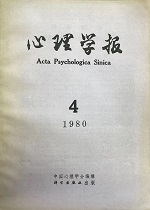|
|
PSYCHOLOGICAL ASPECTS OF COMPONENTS OF PAIN(Ⅱ)
Cai Ta-wei,Wu Rui-liang,Wang Jian-hua,Xu Guo-hui,Chen Xiu-fang,Yang Zhi-liang(First People's Hospital of Shanghai)(Shanghai Normal University)
1980, 12 (4):
60-67.
The present experiment was performed on 25 subjects in normal condition. As we proved in our previous experiments, strong pain consists of twodifferent components, which are sensational and emotional components. Toboth of them electro-acupuncture exerts certain influence. We also came to know that variation of sensational components is corre-sponding to plethysmographic curve, while variation of emotional componentsis equal to perspiration quantity, heart rate, etc. We may, therefore, havegood reason to say that plethysmographic curve can be taken for theobjective index of sensational components, while perspiration quantity, heartrate, emotions variation for that of emotional components. Moreover, electro-acupuncture has analgesic effect on sensational aswell as emotional components of the strong pain, and the effect on thelatter is much stronger than that on the former. The result of the experiment shows that the main and principalanalgesic effect produced by electro-acupuncture is very probably lying onits influence to the emotional components of pain.
Related Articles |
Metrics
|




